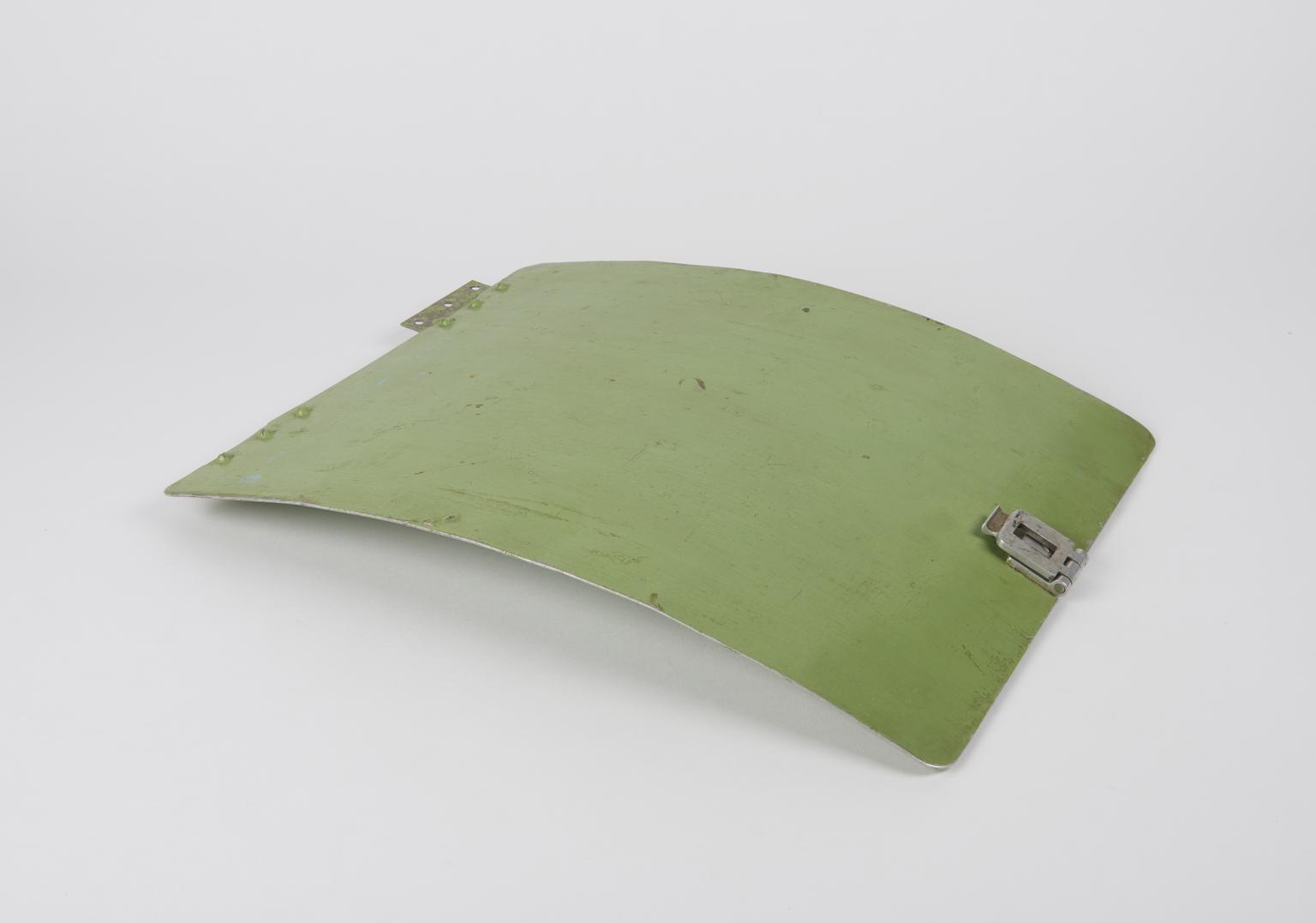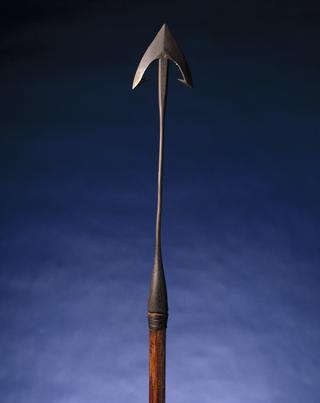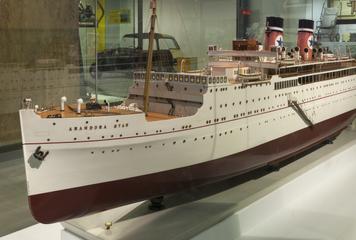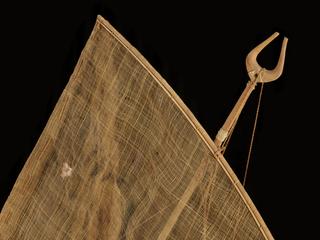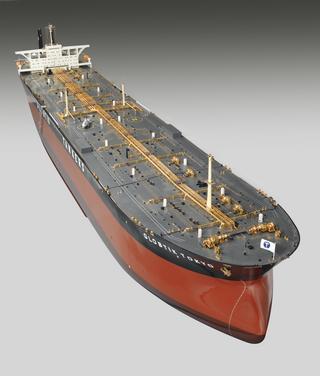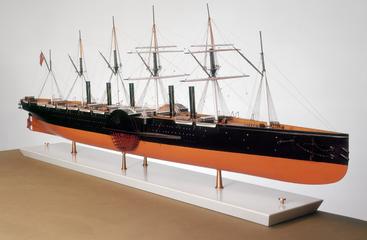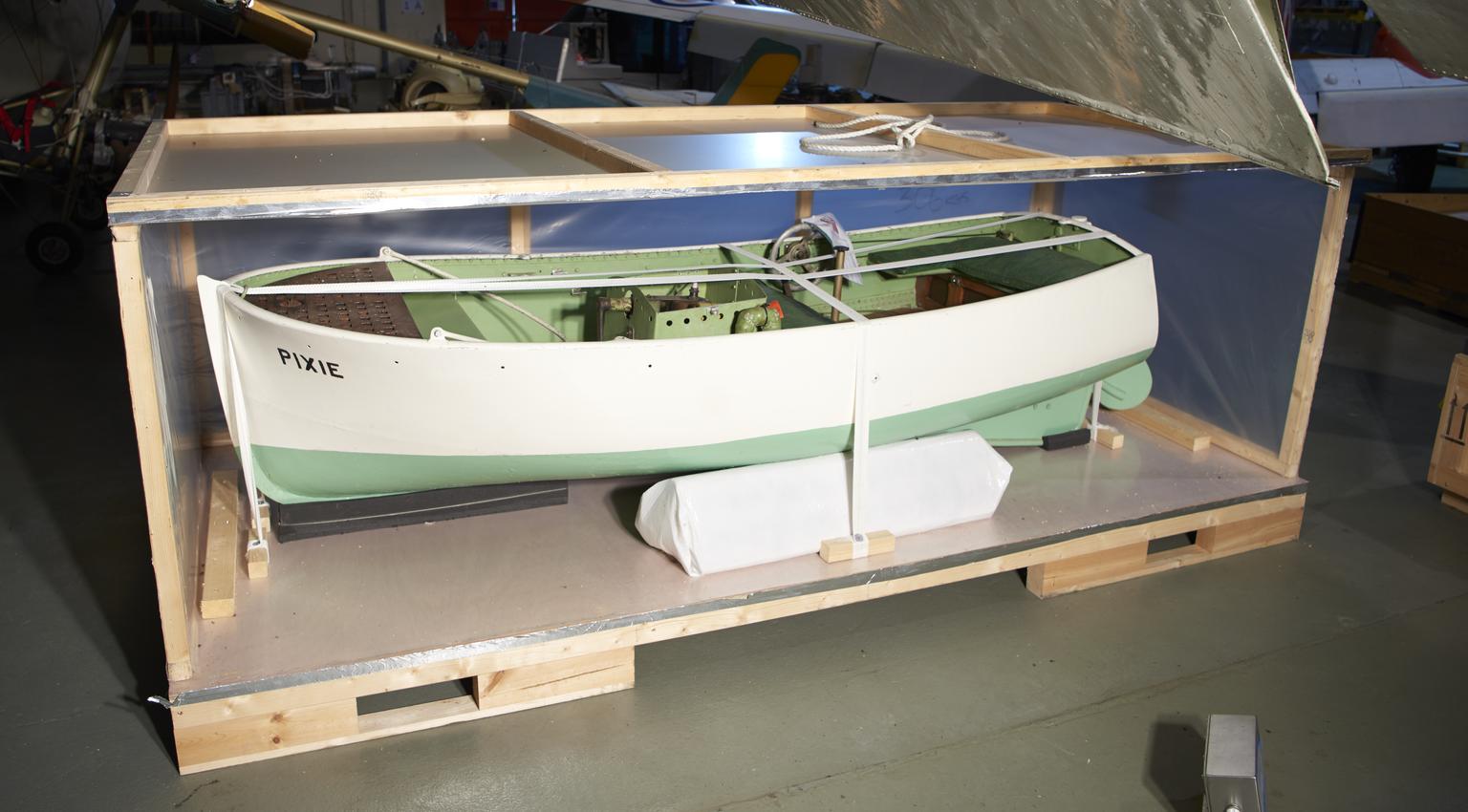
'Pixie' Model Motor Boat
This Pixie model boat was built in the early 1930s by an unknown maker in England and is fitted with an inboard engine and variable propellor built by Watermota in Devon.
The aluminium alloy boat has white and light-green paintwork, and the name ‘Pixie’ is painted on the front-right side of the craft. The boat has a side mounted wheel, and three rows of seating. The Watermota engine is mounted in the centre of the boat.
More
This ‘Pixie’ boat was built in the early 1930s as a tender to a luxury yacht and was fitted with an inboard Watermota engine with a variable propeller.
The boat is built out of an aluminium alloy, the development of which was a significant innovation in the field of metallurgy and was highly influential in the designing and manufacturing of ships. Compared to most types of steel, use of aluminium alloys reduced the weight of ships by between 50-60%, making them faster and more agile whilst maintaining durability. The downside of these alloys was there higher manufacturing costs during the 1920s and 1930s. Aluminium alloys such as Birmabright (which was aluminium-magnesium) were also noted for their resistance to corrosion by seawater.
In the 1930s aluminium alloy became popular in the designing of yachts and small support boats such as this ‘Pixie’ boat. However, the development of aluminium alloy ships was stalled by the Second World War, in which the majority of aluminium alloy was used in the construction of aircraft. In the post-war period aluminium alloy ships were popularised again, though they had to competition from the more recently developed glass-fibre-reinforced-plastics based ship designs which emerged in the 1960s and 1970s.
- Measurements:
-
overall: 750 mm x 2995 mm x 1080 mm,
- Materials:
- aluminium (metal) , wood (unidentified) , leather , steel (metal) , copper (metal) , brass (copper, zinc alloy) and electrical components
- Object Number:
- 1977-534/1
- type:
- engine -power producing equipment and boat
- Image ©
- The Board of Trustees of the Science Museum
